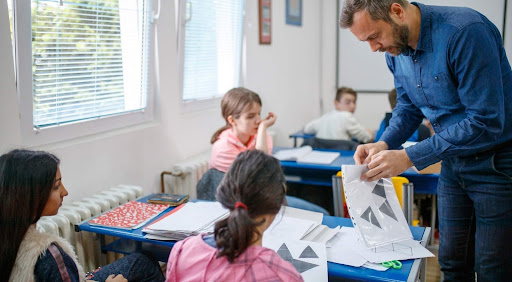The Connection Between MTSS and Special Education: Why It Matters
Many still consider a multi-tiered system of support (MTSS) to be a framework applicable only to a general education setting, while Individual Education Plans (IEPs) are reserved for special education settings.
But is that true? Does MTSS and special education go together? Is there a connection?
We’ll discuss how MTSS fits in both general and special education settings and how MTSS can and should be used by all students — even/especially those with learning disabilities.

Table of Contents
- Should Students With Disabilities Participate in an MTSS Program?
- Why Should MTSS Be Used in a Special Education Setting?
- Understanding the MTSS and Special Education Connection — 4 Ways MTSS Is Beneficial
- 2 Ways to Incorporate MTSS Into Specialized Education
- MTSS and Special Education — Tier 3 Support Is Not Synonymous With Special Education
- Illuminate Education Helps Educators Sustain an MTSS that Promotes Progress for All Students
Should Students With Disabilities Participate in an MTSS Program?
Yes! MTSS programs are designed for all students including those with disabilities and others with special education needs.
MTSS is a structure with multiple tiers that use assessment data to give educators the academic and behavior information necessary to provide the appropriate instructional resources to meet their students’ needs.
That kind of information is helpful for students — both those who are in special education programs and those who aren’t. And because students who have been identified as having a learning disability spend at least part of their school day in a general education setting, MTSS is the perfect framework to provide targetted supports.
MTSS is about:
- Thoughtfully assessing students
- Using resources effectively; and
- Relying on data to continue to monitor and improve instructional effectiveness
And those are things all students need.
Why Should MTSS Be Used in a Special Education Setting?
Special education law requires students be placed in the least restrictive environment, which essentially means many children with IEPs, particularly those with high incidence disabilities, spend most or all of their day in a general education setting where they can benefit from well-implemented MTSS. The reason being, students in special education can and should benefit from the resources and other instructional help multi-tiered supports can offer — resources that are both appropriate and impactful.
Assessments can help measure proficiency and identify needs, and MTSS will help educators tailor those resources to the specific needs of students who have IEPs.
Understanding the MTSS and Special Education Connection: 4 Ways MTSS Is Beneficial
#1: MTSS Supports Students’ Educational Needs With a Whole Child Approach
Academics and behavior go hand-in-hand, and MTSS provides support to students in both of those areas. An integrated multi-tiered system of support (one that includes both academics and behavior) considers both qualitative and quantitative data when deciding on what type of instructional support a student may need for social-emotional skills as well as academic skills like those in reading and math.
#2: The Progress Monitoring Involved in an MTSS Can Help Educators Determine a Specific Learning Disability
Most students who have been identified as having a learning disability spend at least part of their school day in a general education setting. MTSS is an effective way for educators to narrow down and specify skill gaps for these students within a general setting.
MTSS should be aimed at assessing early and providing support quickly. When this assessment happens early on and when progress monitoring takes place regularly, educators can differentiate between students who’ve experienced gaps in their education and those who truly need special education services.
And when those special education needs are identified, there will be plenty of documentation available because of the progress monitoring to help develop impactful and effective IEPs.

#3: Progress Monitoring Can Help Determine If and When a Student Should Be Exiting From an IEP
Identifying a student who may need special education services can be challenging–especially in this era of learning disrupted by school closures, online/hybrid learning, and increased staff shortages and turnover–but it can be equally as challenging to know when a student is ready to exit a special education program.
That’s where progress monitoring comes into play. After effective instruction, students may no longer demonstrate a learning disability and should be re-evaluated and declassified.
Progress monitoring is a key tool in assessing a student’s special education needs. It is also helpful in determining when they are ready to exit from an IEP with confidence that the student will continue to progress and succeed.
#4: MTSS Can Help Students on IEPs Move from a Tier 3 Into Tier 1 or 2 Instruction
MTSS and progress monitoring are designed to help students on IEPs meet their goals and move from Tier 3 into Tier 1 or 2.
The goal of all special education resources is to provide a way for students to begin testing within standard educational ranges. When students show that kind of progress, they move from Tier 3 services to those that are less restrictive.
The Benefits of Co-Teaching
Schools are a beacon of support for all students, regardless of whether they are classified as general or special education students. When educators and administrators utilize a consistent and effective approach this benefits all students in the following ways:
- Improved academic performance
- Fewer behavior problems
- Fewer erroneous special education referrals; and
- Higher graduation rates
Additionally, co-teaching delivers improved outcomes both for students on IEPs and those who are not.
Co-Teaching
Co-teaching is an effective model that uses the MTSS approach and collaboration, allowing multiple teachers (special and general educators) to work together to serve their students and meet their needs.
When two or more teachers work well together to provide instruction to a group of students together, all students benefit — not just those on IEPs.
When co-teaching is done well, those outside of the classroom may have difficulty distinguishing the special educator from the special educator. It is also often difficult to identify students who have IEPs and those who do not.
In a classroom with co-teachers, all students, those in general education and those with special education classification, receive the specifically designed instruction and benefit from the experience and partnership of the co-teachers.
Co-teachers can seamlessly incorporate IEP skill instruction along with Tier 1 standards-based teaching to create an integrated educational experience for all the students in the classroom.
Tier 3 Support Is Not Synonymous With Special Education
Just because a student is receiving Tier 3 support doesn’t mean the student has a learning disability or needs special education. Some students with disabilities may not need Tier 3 support while those without disabilities may benefit from Tier 3 services.
What this means is that Tier 3 support can be very helpful to those students who do need special education.
MTSS works best for all students when a committed, creative, and consistent multi-disciplinary team is overseeing it, making sure that it is implemented appropriately, but also that it is used flexibly enough in schools to address the varied strengths and needs of the students within the school.

Illuminate Education Helps Educators Sustain an MTSS that Promotes Progress for All Students
Illuminate Education combines assessment, MTSS collaboration, and other data visulazation tools to give educators the tools needed to tailor their instruction to meet the needs of their students.
Contact Illuminate Education to schedule a personalized demo.
*****
Illuminate Education equips educators to take a data-driven approach to serving the whole child. By combining comprehensive assessment and MTSS management and collaboration tools, the Illuminate Solution enables educators to accurately assess learning, identify needs, align whole child supports, drive system-level improvements, and equitably accelerate growth for every learner.
Ready to discover your one-stop shop for your district’s educational needs? Let’s talk.


